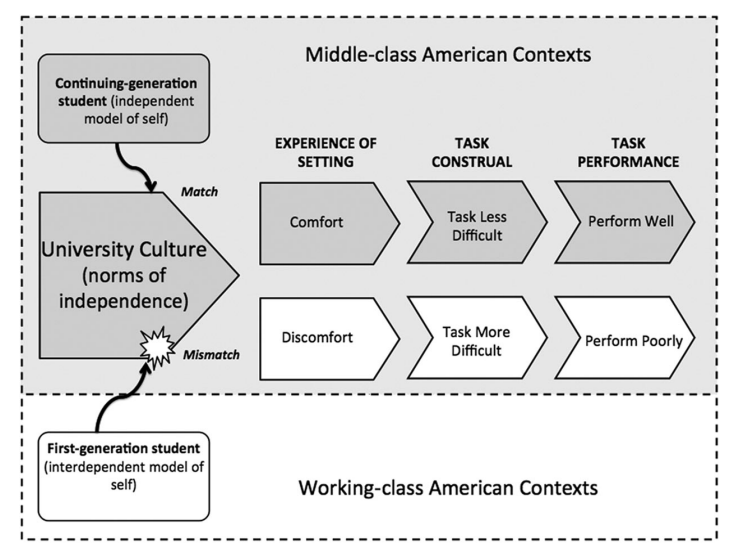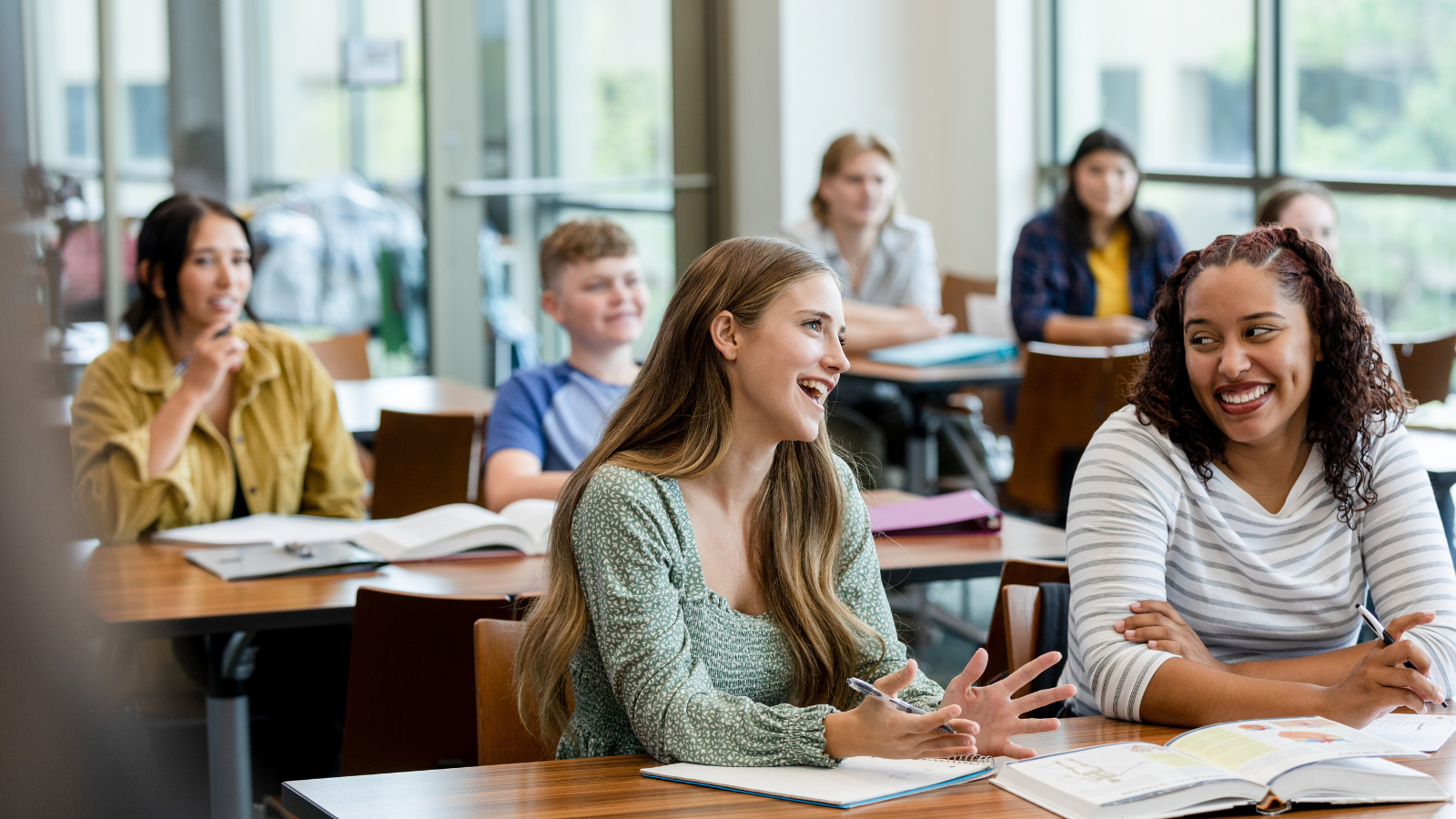The theory of cultural mismatch holds that when the culture of an academic institution differs significantly from a student’s family or home culture, the student experiences tension or conflict that impacts their academic performance and mental and physical health. When a college or university doesn’t endorse or accommodate the values a student arrives with, it creates emotional and physiological stress for the student that impacts learning. Cultural mismatch theory, therefore, can inform analysis of systemic causes of equity gaps for minoritized, poverty-affected, and first-generation students.
Cultural mismatch theory was first proposed in the 2012 article Unseen Disadvantage: How the American Universities’ Focus On Independence Undermines the Academic Performance of First-generation College Students, which was based on a series of prior studies by the five co-authors. Their studies documented a tension between interdependent and independent values. First-generation students, who were more likely to come from working-class families, more often had interdependent motives for pursuing higher education. But the college and institutional environments of the students they followed emphasized independence, and that tension was associated with lower grades for those students.
For example, in a survey, students were asked to endorse particular norms. First-generation students were more likely than continuing-generation students to endorse norms like:
- Help my family out after I’m done with college
- Be a role model for people in my community
- Bring honor to my family
- Show that people with my lived experiences can do well
- Give back to my community
- Provide a better life for my own children
While holding these norms would seem to be an asset, in effect those students were at a disadvantage compared to students who endorsed norms that expressed their individual potential and interest.

From “Unseen Disadvantage: How the American Universities’ Focus On Independence Undermines the Academic Performance of First-generation College Students”
Later publications by some of the co-authors of “Unseen Disadvantage” characterize their theory more specifically as the cultural mismatch theory of inequality.
Other studies on cultural mismatch theory
In the years since “Unseen Disadvantage,” other researchers have worked to investigate or extend the cultural mismatch theory and to describe how it works. For example, a 2021 article in Frontiers of Psychology describes how cultural mismatch “disrupts the attentional focus.”
The authors found that first-generation students particularly experience a “mismatch between their collectivistic values (where priority is given to group goals and community cohesion) learned at home and the independent or individualistic values of 4-year institutions (where priority is given to personal needs and goals). This general sense of mismatch has been rigorously examined and documented as causing a disruption in academic performance.” The authors go on to examine how factors such as race and ethnicity, geographical distance, and gender can impact the experience of cultural mismatch for students.
A 2019 study published in Cultural Diversity and Ethnic Minority Psychology found that concerns about losing face, family obligation, and group harmony led minoritized, first-generation students to underutilize social support systems in college.
Other studies have gone on to examine the neurological effects of cultural mismatch, the physiological effects, and the psychological and behavioral implications.
Cultural mismatch and equity in higher education
Cultural mismatch forces students to balance their community values, academic culture, and academic and career goals in unsustainable ways. On the implications of cultural mismatch in higher education, authors Nicole Stephens and Sarah Townsend observe that:
“. . . increased reliance on peer norms may give members of underrepresented groups a sense of solidarity with the social groups that are central to their identities. However, in the long run, adherence to these norms rather than mainstream or aspirational norms is likely to hinder the ability of members of underrepresented groups to transition to new social roles that would afford them higher status and power. Ultimately, this would amplify the experience of cultural mismatch and, thereby, maintain, and perpetuate inequality.”
While there appears to be little writing on using cultural mismatch theory to inform classroom practices, one obvious starting point is to emphasize strengths-based or cultural-wealth perspectives that design learning opportunities around the assets students arrive with.
The theory is also related to culturally responsive teaching, which prompts instructors to consider:
- how their own cultural background differs from their students’;
- variations in how students experience the language of academia;
- variations in how students experience the norms of competition and debate; and
- ways to affirm every student’s culture.
The theory of cultural mismatch provides an additional model for illuminating how access to higher education is not enough to create equity for every learner. Colleges and universities must not only admit Black, Latino, Indigenous, poverty-affected, and first-generation students but must also proactively identify and remove barriers to their academic progress, including the unseen cultural barriers in the academic environment.
Hear from students in What Our Best College Instructors Do

